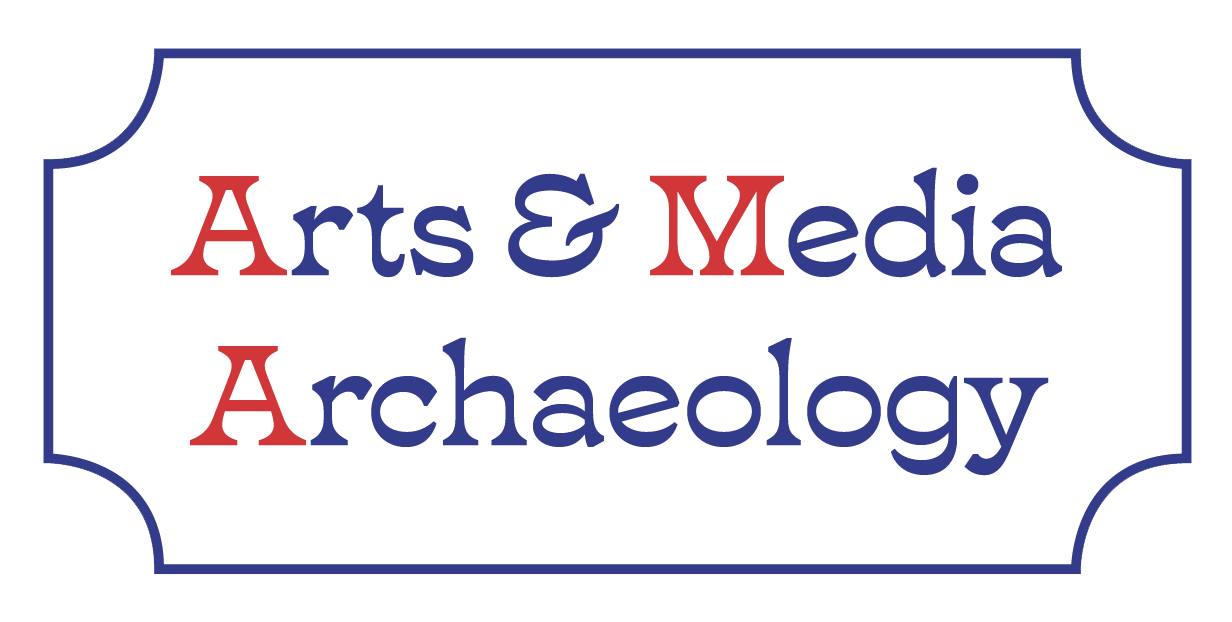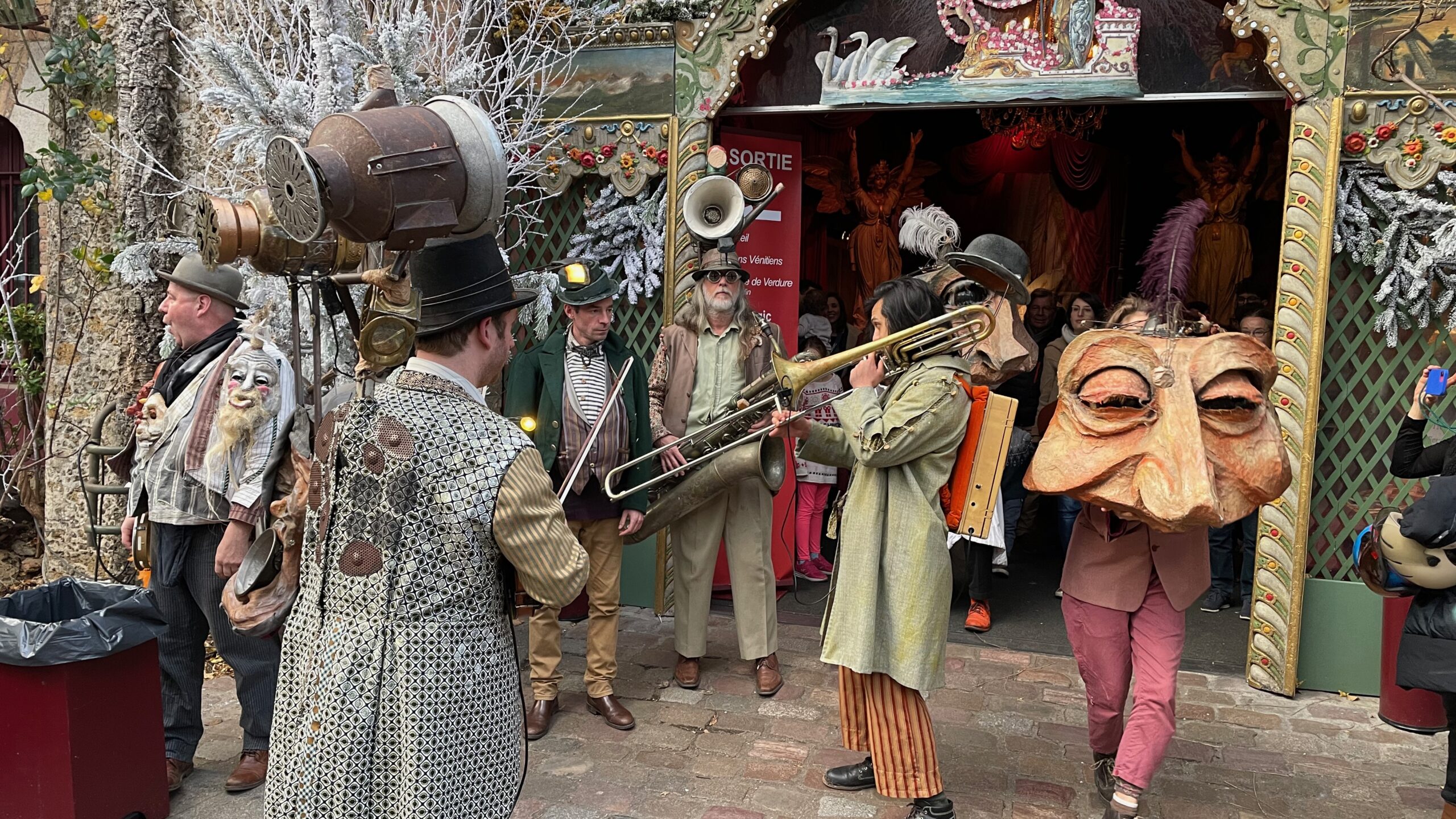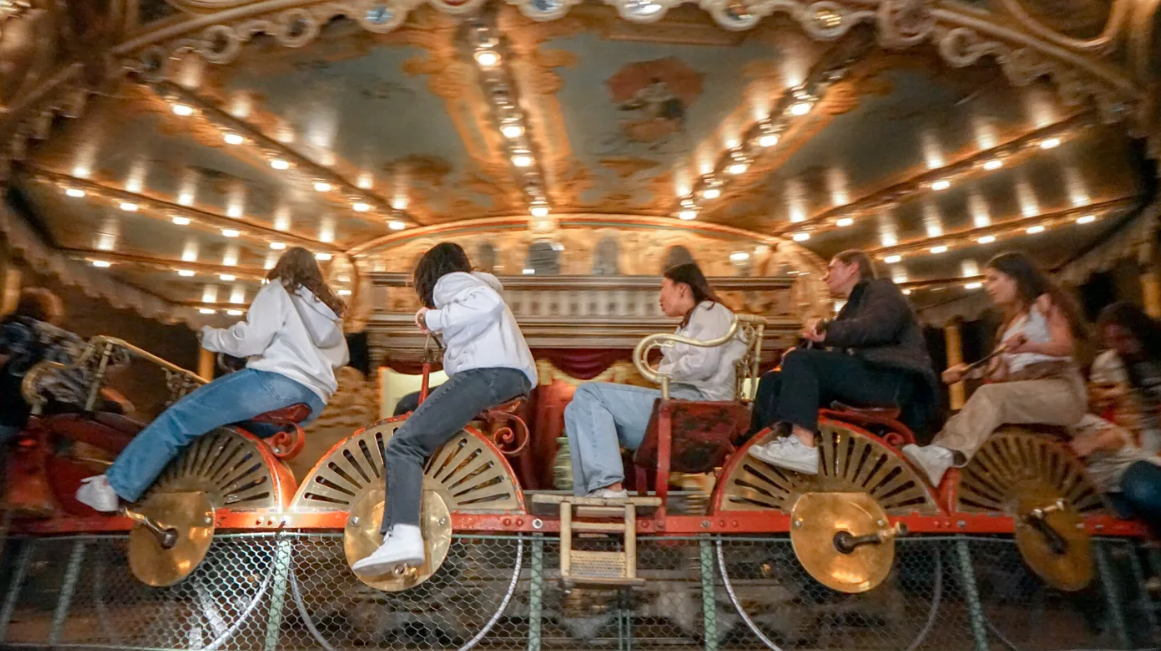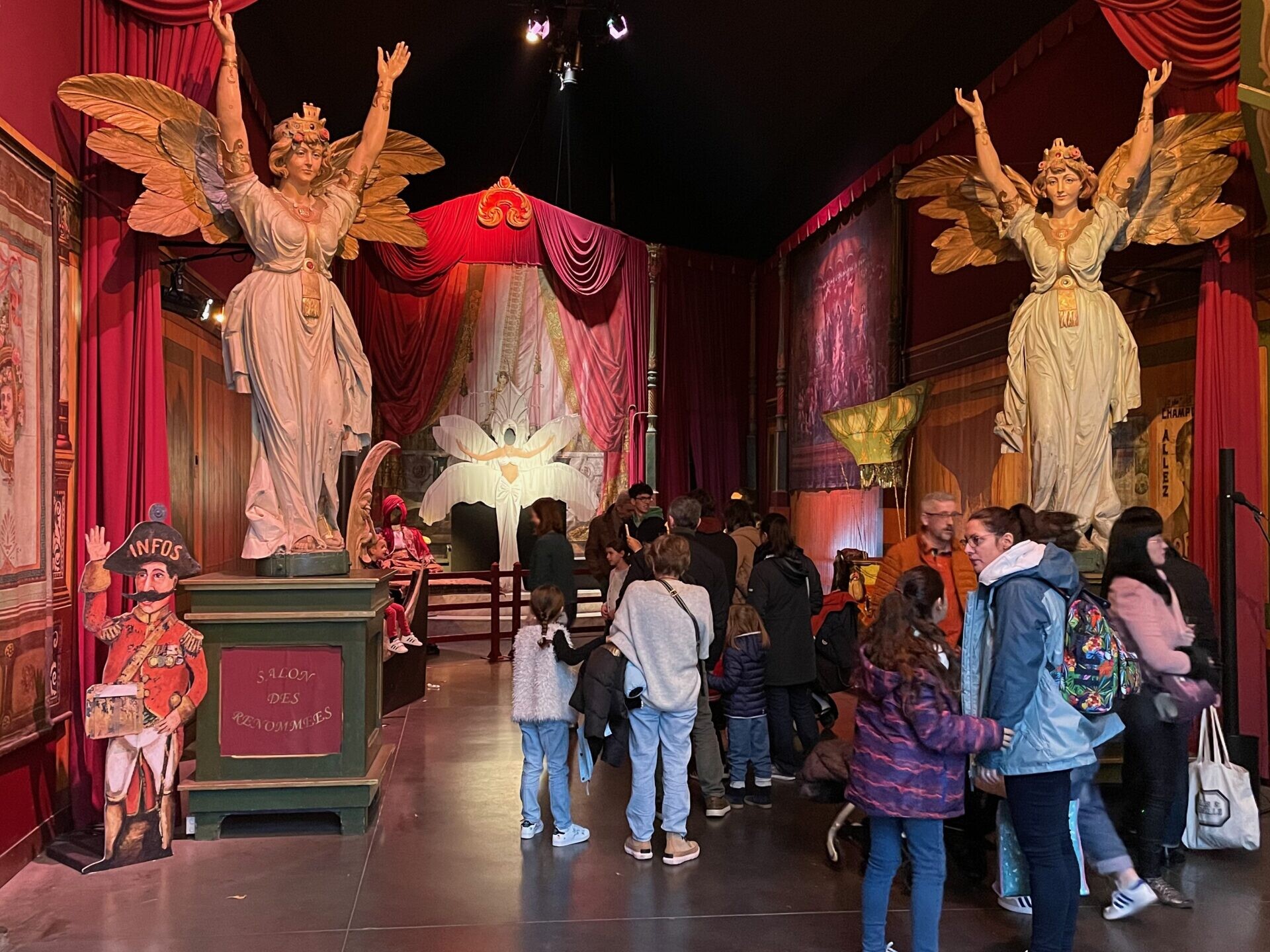This past year-end, the Musée des Arts Forains in Paris celebrated funfair culture as intangible heritage in a new edition of the Festival du Merveilleux (Festival of Wonder). The unique museum in the Pavillons de Bercy convincingly demonstrated that the funfair is a living culture that exists only by virtue of performers and entertainers interacting with an audience. Spanning 12 days, more than 5,000 visitors a day could witness how this enchanting place beyond time set the stage for a dazzling programme of live shows, music and dance. During the festival, the historic funfair attractions, fairy decors and automatons from the past also came to life in a spectacle of projections, lights and sound.
The museum highlights the beauty of fairground heritage: four historic spaces – the theatre of wonder, the Venice carnival, a magic mirror tent and a fairground from the belle epoque era – provided the breath-taking backdrops for short live shows by acrobats, tap dancers, musicians, puppets, mechanical music, a ballet of automatons, optical illusions, and other curiosities.
In the illuminated garden, the audience could experience the enchantment of a festive village where a colourful steampunk orchestra passed by in a dazzling parade. The old candy stalls, shooting booths and horse races were also reopened for young and old alike.
The Museum of Experience
At the origin of the French “musée-spectacle” lies the unique collection and passion of Jean Paul Favand, a former antique dealer from Saint-Étienne with a passion for theatre. His love for spectacle drew the antiquarian to the fairground. After discovering fragments of woodwork reminiscent of the wainscots of a royal palace, his research revealed that these were the remains of a carousel saloon, one of the most eccentric of all fairground attractions around 1900. With its abundance of beautiful wood sculptures, mirrors and paintings, the carousel saloon testifies to the architectural excess of the great fairs. Favand coined the term “art forain” given its clear link with art nouveau and other artistic and architectural styles of the time.
Over the past 60 years, Favand has collected and restored a unique collection of “art forain” objects, automatons, decors and attractions in the former Bercy wine warehouses, a space of 3,500 m2 transformed in an experience museum following a specific concept: “It’s a show museum, so it’s not just a museum, it’s a place where there are a lot of shows, and where the visitors participate as actors in the activity of the place. When you go through the entrance gates, you arrive in an enchanted forest and from this forest you can access four rooms. You are in the present moment and in a waking dream ,” explains Favand. He wanted a living museum, where the objects are not behind glass. A museum where it is possible and even recommended to touch and interact with the exhibits.
Trade, religion and entertainment
Fairground culture boasts a very old European tradition dating back to the medieval annual fair. This was an annual market where originally mainly cattle, but also all types of goods and materials were traded. It could last for a few days or even weeks. On the outskirts of the market, where many people gathered, many artists flocked together to take advantage of the large crowds. Acrobats, dancers, animal tamers, magicians, miracle doctors and singers brought villages to life with colourful shows and brought joy and laughter to local audiences. Thus, the annual market grew into a great folk festival marking the rise of trade in the Middle Ages.
It is no coincidence that these annual festivities were embedded in the religious calendar by the Church. The word Dutch word “kermis” comes from kerkmis (a contamination of “church” and “mass”), a solemn mass in the Middle Ages that was dedicated to the patron saint of the church. The official part took place in the church, but the festive part outside: at the fair. This explains why many funfairs today are still celebrated annually on the name day of the patron saint of the parish. The French word kermesse and the English kermis are borrowed directly from Dutch and, like the German Kirmes and Messe, underline the religious origins. Back then, the annual fair combined religious celebrations with trade and entertainment. This triple origin is also reflected in the French foire and the Flemish foor. Like the word “fair,” they are derived from Latin feriam, meaning “to celebrate.” At the same time, these words also mean “market.”
Tradition and progress
The funfair as we know it today is mainly indebted to the industrial revolution and the mechanization of entertainment since the mid-nineteenth century. Merchants moved to the large new department stores, and market vendors eventually gave way to huge wooden travelling theatres and museums with impressive facades to lure visitors inside.
Renewed, industrial design transformed the ‘popular’ fair into a market of spectacles with magnificent decors, sumptuously lit with electric lamps, powered by steam engines and accompanied by full orchestras – on display today at Favand’s Museé des Arts Forains.
The programme was a mixed bill of shows with music, dance, acrobatics, and magic. These electrically lit fairground theatres were the epitome of the unlimited optimism of the bourgeoisie and were consequently attended by the wealthy.
The role of technology became increasingly important. The so-called golden age of fairground entertainment at the turn of the century (1890-1914) refers to the growing range of mechanical attractions such as carousels and rides, powered by steam engines and electricity. Eventually, the mechanization of the funfair shifted the emphasis from live spectacle with shows and demonstrations to automated entertainment. This enabled fairground operators to keep pace with the technological advances of the time. By then, travelling fairground theatres, museums and cinematographers had already left the funfair to settle in permanent locations.
But the core of European funfair culture has been preserved and passed on throughout the centuries: during the annual fair, young and old are immersed in a total experience of movement, colours, smells and tastes. They are organized by local communities in close collaboration with the itinerant funfair people (forains, travelling showpeople), a community with strong social and international ties, who have passed on their nomadic tradition from parent to child for generations (from technical expertise to theatrical, commercial and organizational skills).
The strength of this recurring popular festivity relies on a strong dynamic between tradition and innovation: besides the traditional merry-go-rounds, skill and chance games, fries, waffles and candyfloss, forains have constantly renewed their businesses to the rhythm of the changing era.
Fairground as European intangible heritage?
The funfair is a typically West-European tradition. At least, the combination of a local folk event rooted in the medieval annual fair, with travelling entertainers and stallholders transforming a town or village square into a temporary open-air festival for a few days. European migrants also brought the tradition to the United States and Australia, where it was translated into related forms of entertainment, such as travelling carnivals, circuses and theme parks, but without the local embedding so distinctive of the European funfair.
Awareness about the significance of the funfair as cultural heritage has grown significantly in Europe in recent years. In 2021, Belgium and France submitted a multinational dossier to UNESCO to have fairground culture recognized as “living heritage” or “intangible cultural heritage”, as both a source and expression of cultural identity and diversity. The UNESCO-dossier was initiated by the Belgian and French Fairground Unions, and in close collaboration with the Musée des Arts Forains in Paris, with the intention that more European countries can join this international application.
At a national level, fairground culture has already been included in the Intangible Heritage Inventory of France (in 2017), Belgium (in Flanders in 2014, Wallonia and Brussels in 2021, respectively), Finland (2017), Sweden (2018), Ireland (2021) and most recently the Netherlands (2022). In Germany, which has one of the strongest fairground traditions, it is still on the agenda. Hopefully, the UNESCO commission will soon give the funfair dossier the green light: it would be a major recognition for the thousands of forains who have kept the tradition alive for years, as well as the millions of annual visitors to the European fairgrounds.
Author
-
Nele Wynants is research professor art and theatre studies at the University of Antwerp (Antwerp Research Institute for the Arts - ARIA). She coordinates the EU-funded project Science at the Fair: Performing Knowledge and Technology in Western Europe, 1850-1914 and is editor-in-chief of FORUM+ for research and arts.






